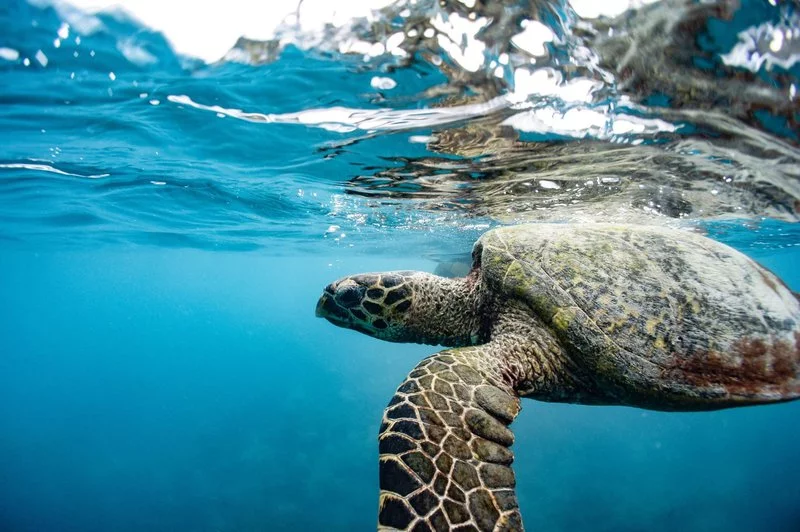Sea Turtles with Wings
Arguably one of the most loved creatures that call the Great Barrier Reef home are the sea turtles. You can guarantee a smile on every face when there is a sea turtle around.
We are lucky enough to have six of the seven extant species of sea turtles found in our 2000km stretch of paradise. Seeing one of these magnificent reptilian creatures is like having a glimpse into an ancient past, they have been roaming our planet's oceans for at least 120 million years, incredible right. Being around for such a long time means these guys have some pretty amazing survival tricks and adaptations. First and foremost is their shells, not only are they beautifully patterned but they are super hard and aid in protecting the turtles in attacks from predators such as sharks. These shells also help them to blend in and hide on the reef. They have an impressive set of lungs which give them the ability to hold their breath underwater for an incredibly long time, up to 5 hours for some species.
Female sea turtles have an amazing memory and internal compass and when it is time for them to lay their eggs they will return to the very same beach they hatched from their egg on sometimes 50 years prior. They lay clutches of sometimes around 200 eggs with between 2-8 nests in a season depending on species. Once they have hatched it is a game of survival of the fittest and only the strongest hatchlings will survive into adulthood. Here in the Whitsundays we are lucky enough to see these tiny creatures hatching on our beaches and exploring their new ocean home in our waters.
The 2 most common species of sea turtle we are lucky enough to sea in the Whitsundays are the Green sea turtle and the Hawksbill sea turtle. Green sea turtles grow quite large reaching up to 1.5m in adulthood. We often see these chilled out giants cruising around the reefs, taking a nap on the coral, or in the summertime, enjoying their favourite snack jellyfish.
Hawksbill turtles are a little bit more shy than the greens but no less beautiful. Although they are quite similar looking there are a few big differences between the two species. Hawksbills as their name suggests have a beak shaped quite similar to that of a bird. They use this beak to scrape, crustaceans, molluscs, sponges, urchins and algae of rocks and reef. Their shells are also different, hawksbills have a serrated appearance while greens have a more smooth edge. The patterns and colouring are also different.
A not so happy fact is that most of the sea turtles found in the Whitsundays are listed by the IUCN as either vulnerable or endangered. With the hawksbill being listed as critically endangered. Although we love them this is largely due to human activities. These activities include hunting and poaching (for shells, meat, eggs) and our ever expanding human world which causes widespread habitat destruction.
Wings love these guys and want them to be around for many more millions of years so many more of our guests can enjoy meeting them.
Join us on a trip to see the turtles of the
Great Barrier Reef for yourself and help us spread awareness for their continued survival and conservation.

